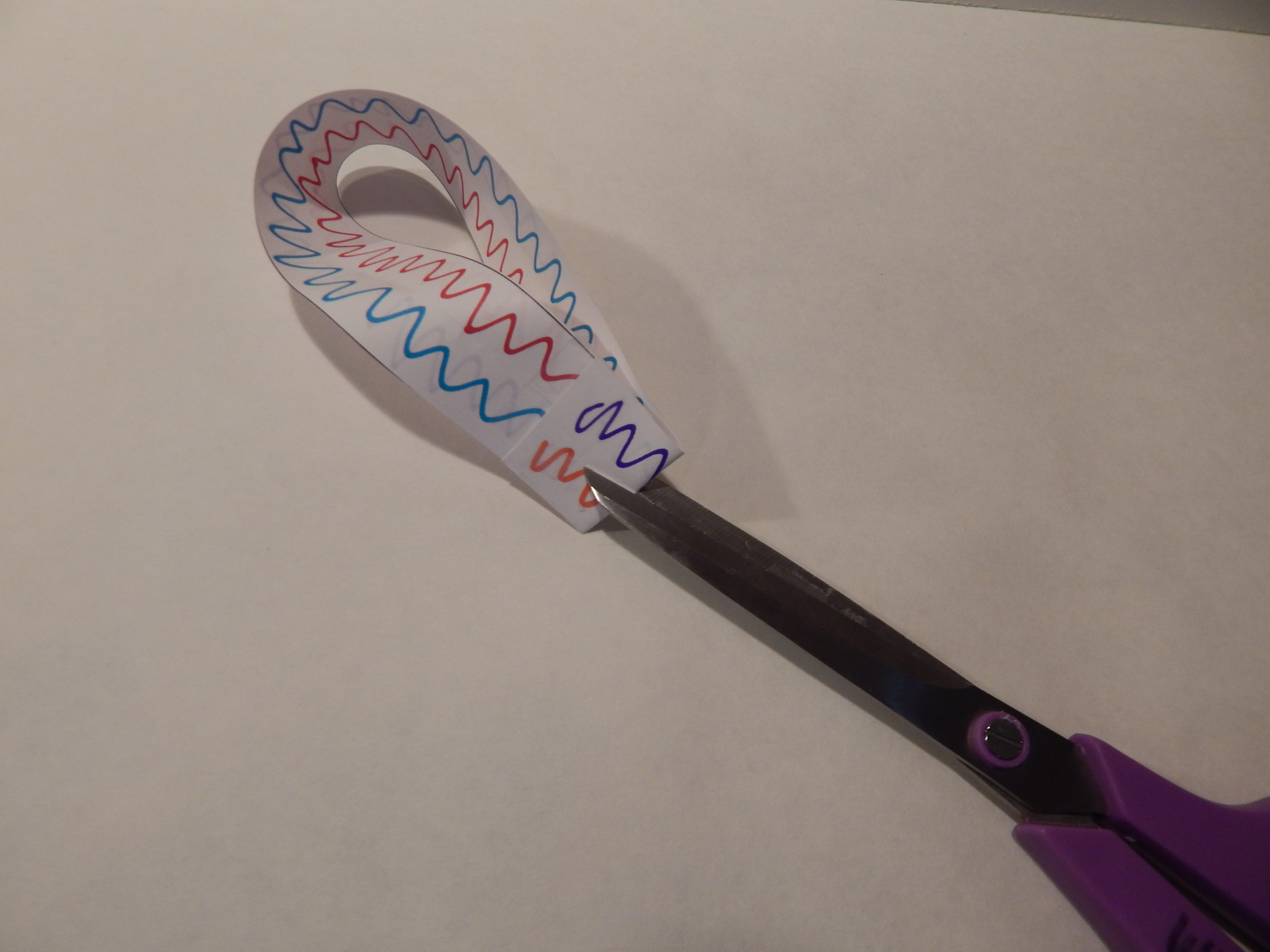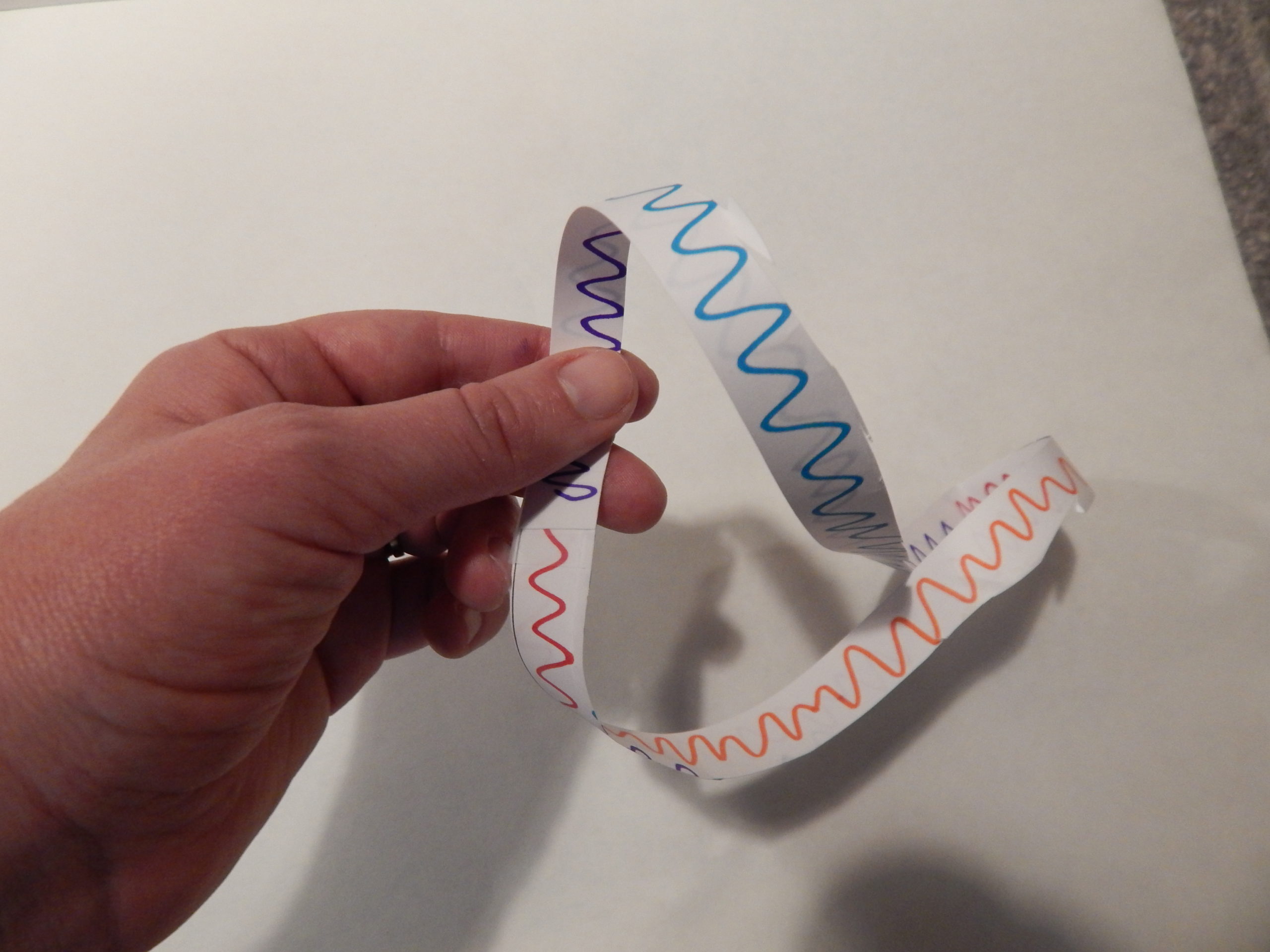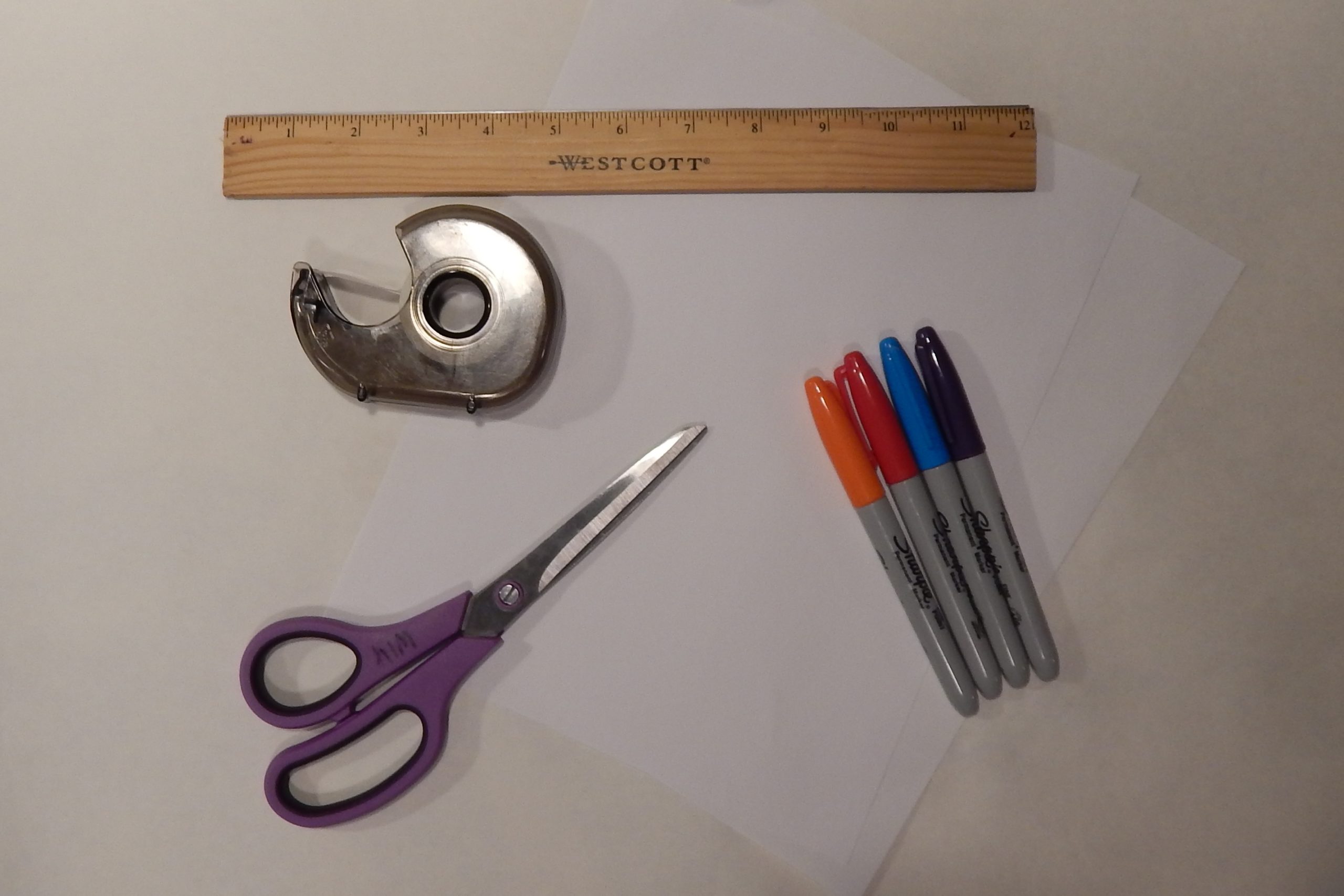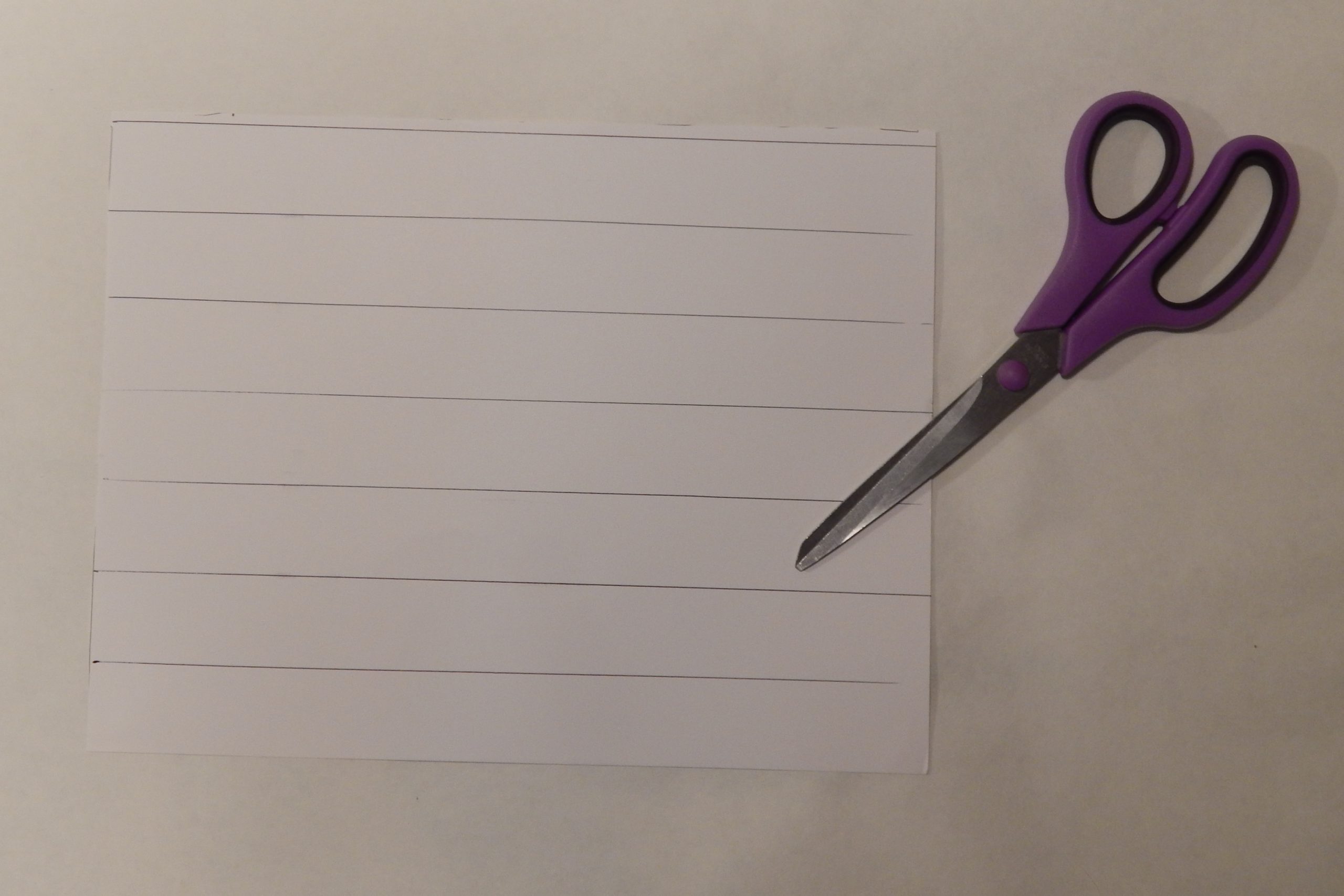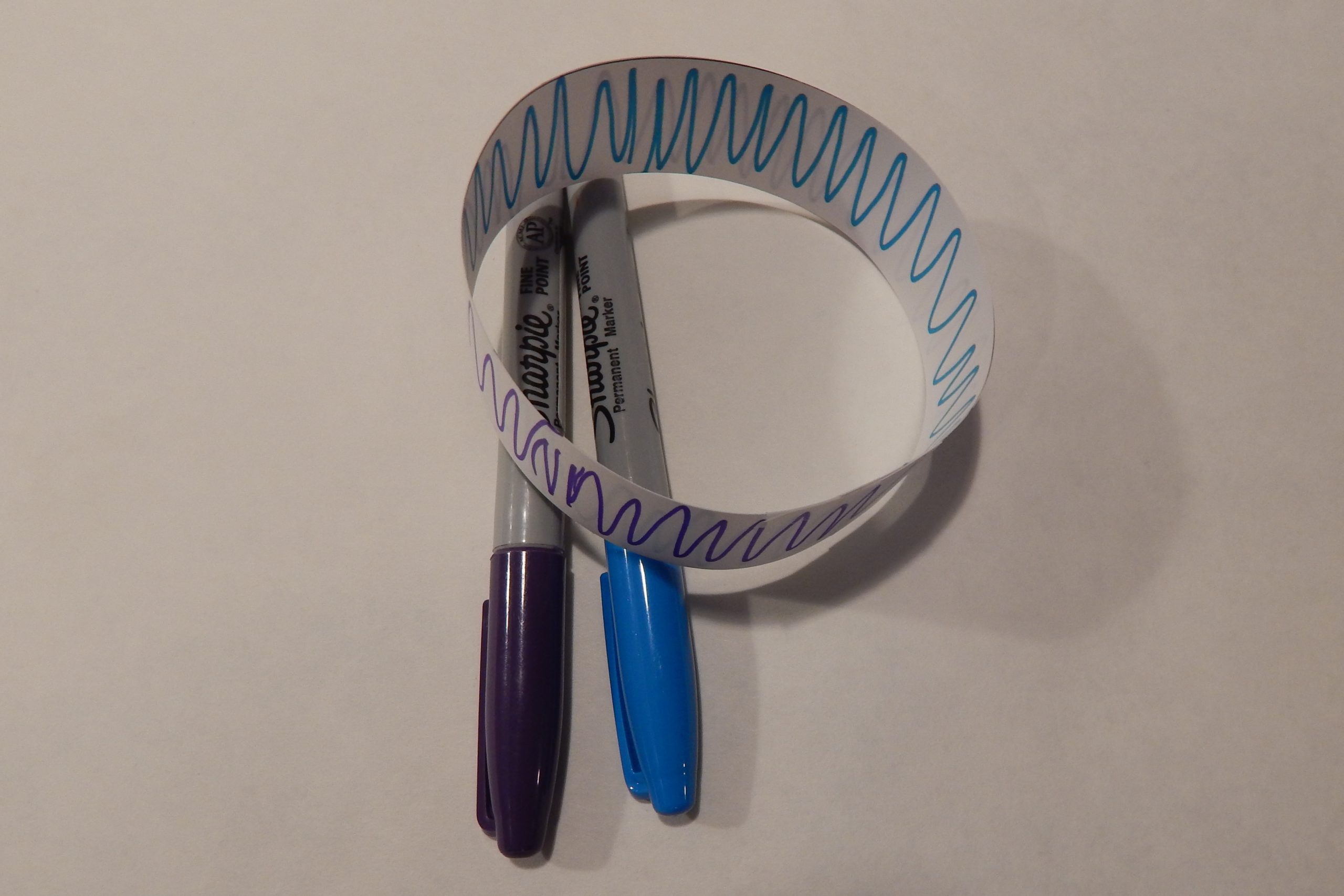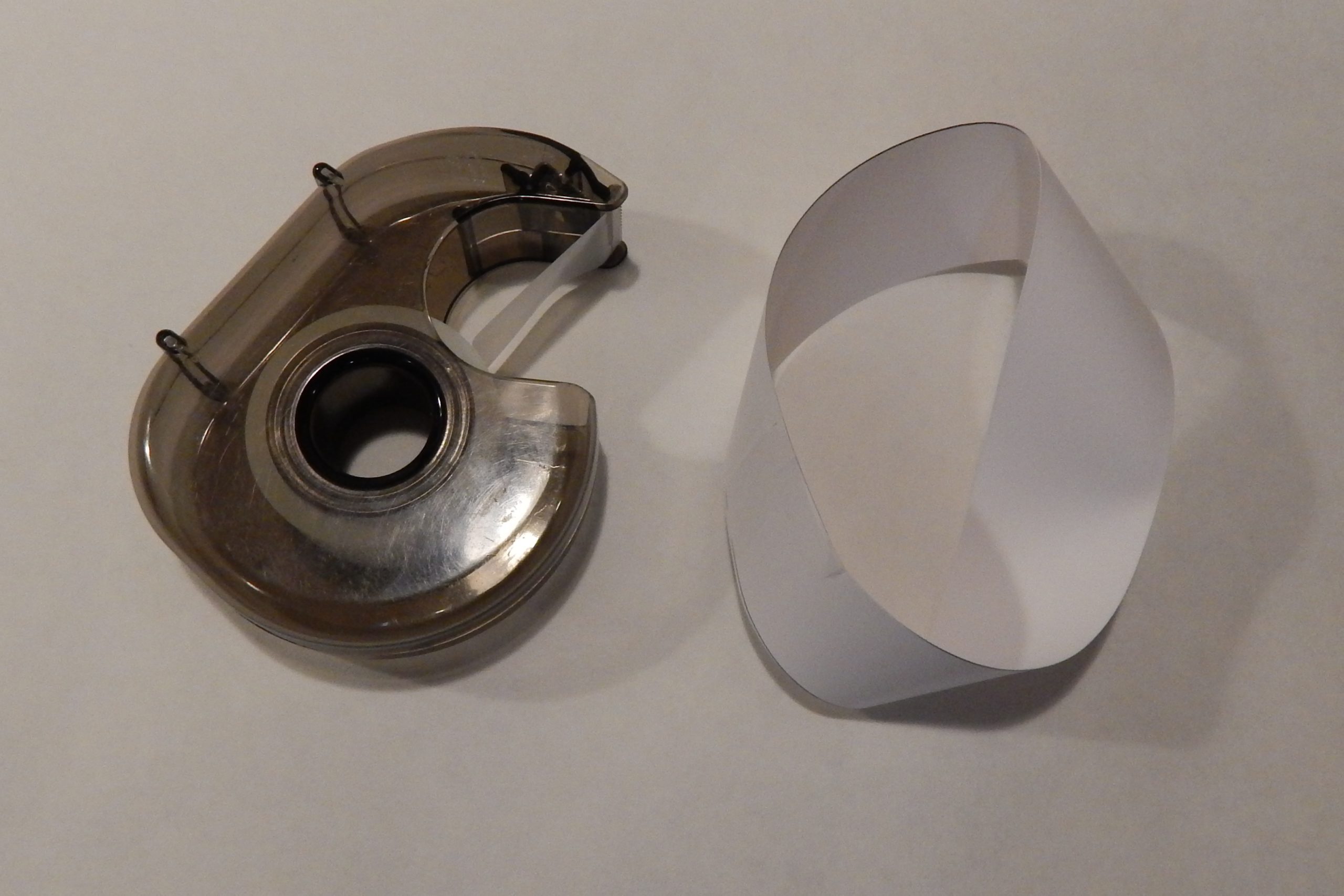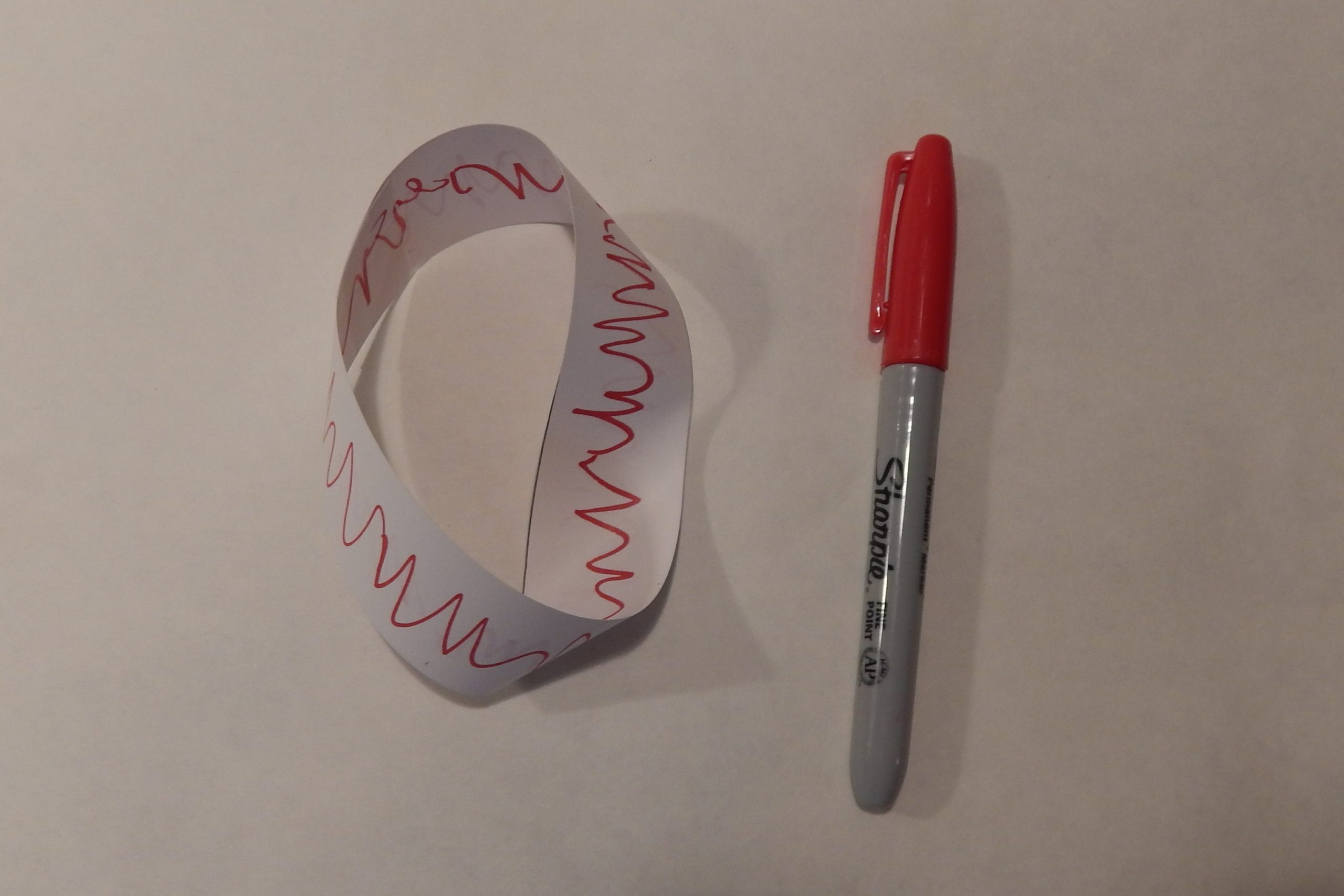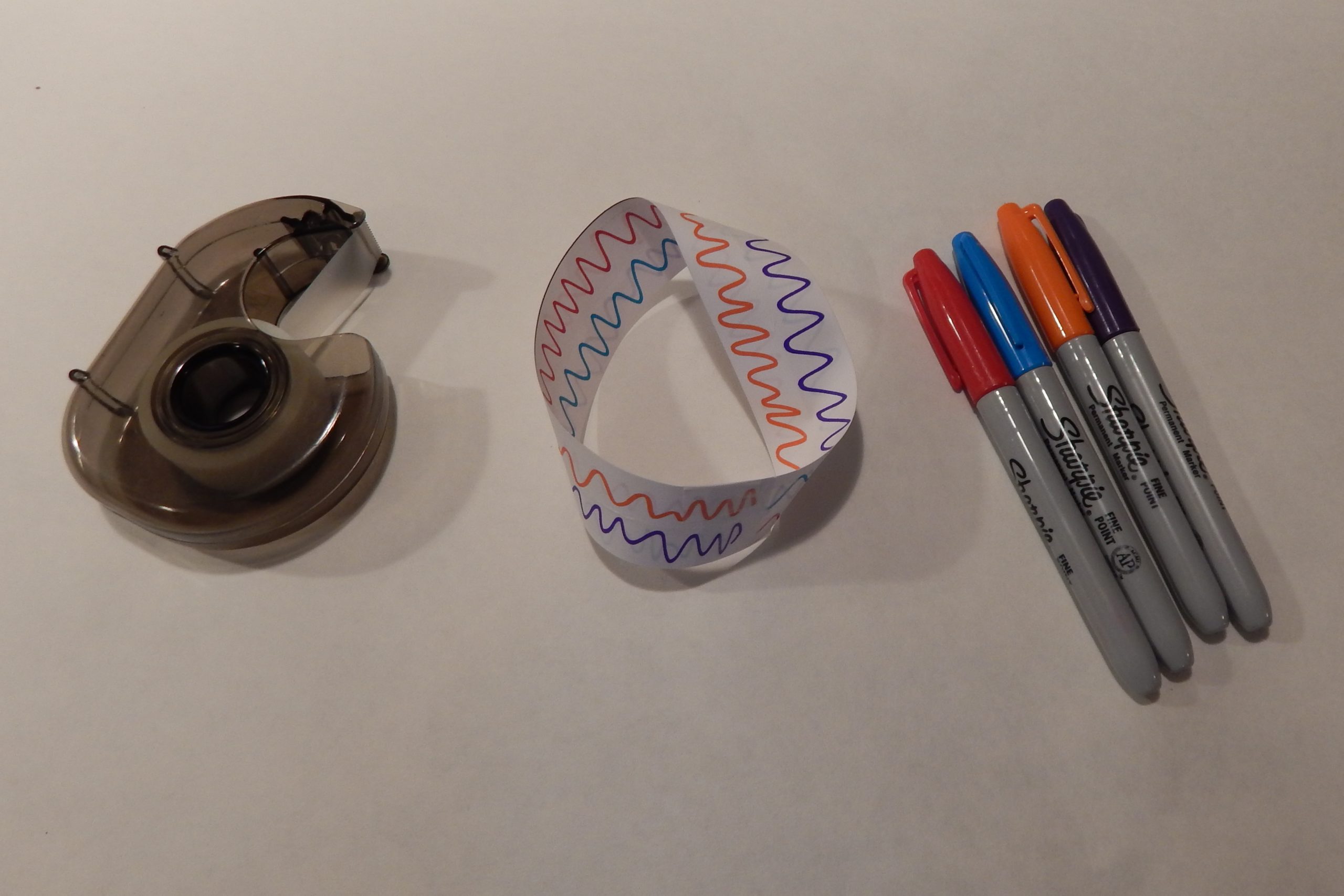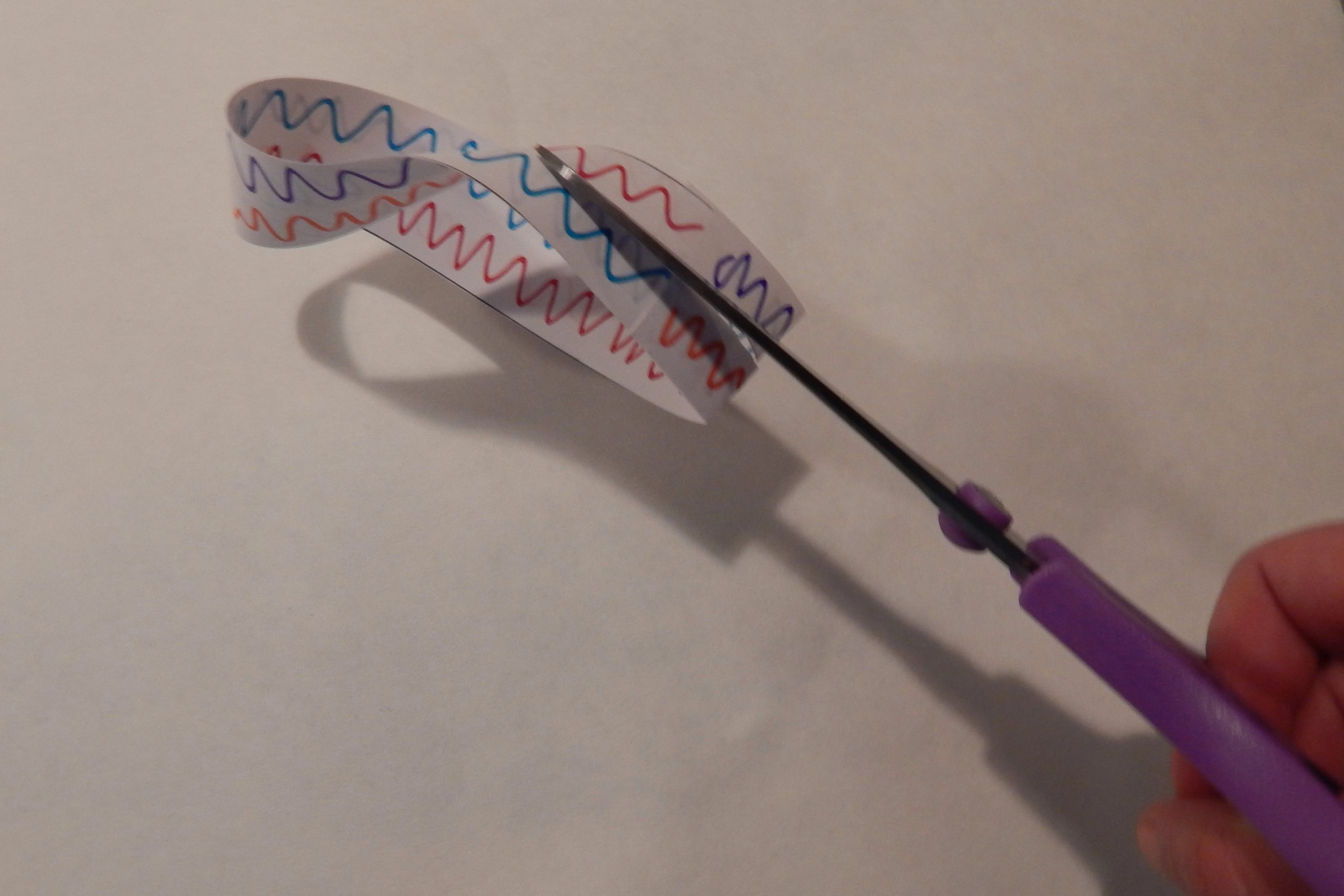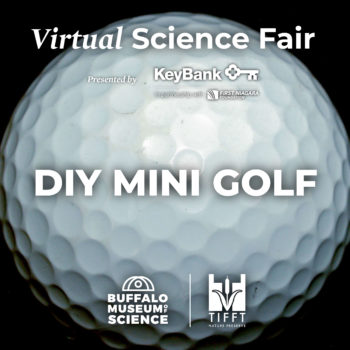Mobius Strip

Have science fun as a family! Complete activities with parental supervision.
Materials:
- A sheet of white paper
- Ruler
- Four different colored markers
- Scissors
- Tape
Procedure
- Use the ruler and scissors to cut one inch wide by 11.5 inch long strips from the paper. You will be able to cut approximately eight from a letter-sized piece of paper.
- Tape one strip to form a loop or cylinder. This ordinary loop will have two sides and two edges. No surprises there! Demonstrate this by coloring one side with one color and the other side with a different color. The colored sides do not touch.
- Take another strip of paper. Before you tape it into a loop, flip one end. Tape securely by putting tape on both sides of where the ends join.
- Try using a marker to color one side. This structure is called a Mobius Strip— a two dimensional structure with only one side! You will continue to go around and around and eventually the entire paper will be colored. Why?
- Be sure to take a picture or video to share in the Facebook comments on the Buffalo Museum of Science or Tifft Nature Preserve pages!
What’s it all about?
The Moebius Strip is a mathematical phenomenon described by German mathematician August Ferdinand Möbius in 1858. It is a two-dimensional surface with only one side!
Today, you see this in places like car engines, air conditioners, and more. The serpentine or fan belt of a vehicle is shaped like a Mobius strip. By forming the belt into this shape, the belt wears out evenly and lasts longer, because one side and one edge are formed.
Also, take a look at the Recycling Symbol. The three arrows also form a Moebius Strip! According to its designer Gary Anderson, “the figure was designed as a Mobius strip to symbolize continuity within a finite entity”.
Try It!
- Take another strip of paper and fold it lengthwise in half, and then open.
- There are now four “sections” to color, two on one side, and two on the other. Color each section a different color.
- Tape this strip into a Mobius Strip. Cut this loop lengthwise, down the center by first folding the paper slightly and making a little snip. Then snip lengthwise, through the entire loop. You will end up where you started.
- Whoa! You turned a one-sided loop back into a two-sided loop that is twice the size. Demonstrate this by sliding the loop between your fingers. You will only see two of the four colors and need to flip the loop to see the other two on the other side
